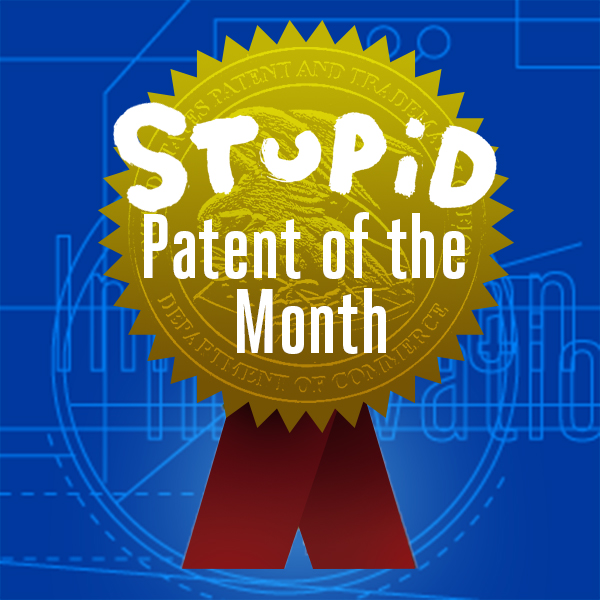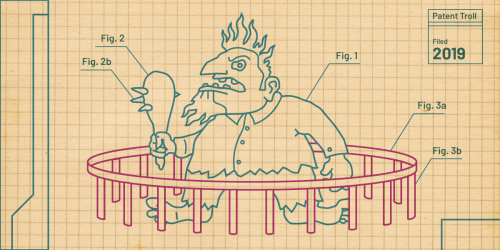 Blue Spike LLC is a patent litigation factory. At one point, it filed over 45 cases in two weeks. It has sued a who’s who of technology companies, ranging from giants to startups, Adobe to Zeitera. Blue Spike claims not to be a troll, but any legitimate business it has pales in comparison to its patent litigation. It says it owns a “revolutionary technology” it refers to as “signal abstracting.” On close inspection, however, its patents1 turn out to be nothing more than a nebulous wish list. Blue Spike’s massive litigation campaign is a perfect example of how vague and abstract software patents tax innovation.
Blue Spike LLC is a patent litigation factory. At one point, it filed over 45 cases in two weeks. It has sued a who’s who of technology companies, ranging from giants to startups, Adobe to Zeitera. Blue Spike claims not to be a troll, but any legitimate business it has pales in comparison to its patent litigation. It says it owns a “revolutionary technology” it refers to as “signal abstracting.” On close inspection, however, its patents1 turn out to be nothing more than a nebulous wish list. Blue Spike’s massive litigation campaign is a perfect example of how vague and abstract software patents tax innovation.
The basic idea behind Blue Spike’s patents is creating a digital fingerprint (which the patents refer to as an “abstract”) of a file that allows it to be compared to other files (e.g. comparing audio files to see if they are the same song). In very general terms, the patents describe creating a “reference generator,” an “object locator,” a “feature selector,” a “comparing device,” and a “recorder.” You will be amazed to learn that these five elements “may be implemented with software.” That task, however, is left for the reader.
Even worse, Blue Spike has refused to define the key term in its patents: “abstract.” In a recent filing, it wrote that even though the term “abstract” is “a central component to each of the patents,” a single definition of this term is “impossible to achieve.” This is a remarkable admission. How are defendants (or the public, for that matter) supposed to know if they infringe a patent when the central claim term is impossible to define? This is a perfect illustration of a major problem with software patents: vague and abstract claim language that fails to inform the public about patent scope.
Admitting that the key claim term in your patent is “impossible” to define is probably not a great litigation strategy. And the defendants in some of Blue Spike’s cases have already protested that this means the patents are invalid. The defendants should win this argument (especially since a recent Supreme Court decision tightened the standards applied to vague and ambiguous patents). Though regardless of whether the defendants prevail, Blue Spike’s litigation campaign has already imposed massive costs.
Blue Spike’s patents illustrate another major problem with software patents: vague descriptions of the "invention" that provide no practical help for someone trying to build a useful implementation. This is why many software engineers hold patents in low regard. As one programmer told This American Life, even his own patents were little more than “mumbo jumbo, which nobody understands, and which makes no sense from an engineering standpoint.” You can judge for yourself, but we contend that Blue Spike’s patents consist similarly of little more than legalese and hand waving.
Real products take hard work. A commercially successful product like the Shazam app (one of Blue Spike’s many targets) is likely to consist of tens of thousands lines of code. Actually writing and debugging that code can require months of effort from dozens of engineers (not to mention the fundraising, marketing, and other tasks that go into making a real-world product successful). In contrast, it's easy to suggest that someone create a "comparison device" that "may be implemented with software."
Last month, we selected a bizarre patent to illustrate that the Patent Office conducts a cursory review of applications. In contrast, this month’s winner is not so unusual. In fact, Blue Spike’s patents are typical of the kind of software patent that we see in litigation. That such a low-quality patent family could fuel over 100 cases is a stark illustration of the problem with software patents.
Dishonorable mentions:
US 8,838,476 Systems and methods to provide information and connect people for real time communications (a patent on presenting an advertisement at the outset of a “telephonic connection”)
US 8,838,479 System and method for enabling an advertisement to follow the user to additional web pages (Lots of patentese that says put an ad in a frame and keep the frame constant as the rest of the page changes. Awesome.)
US 8,818,932 Method and apparatus for creating a predictive model (this patent claims to apply the “scientific method” to “the problem of predicting and preventing violence against U.S. and friendly forces” and includes hopelessly vague claim language such as “verifying causal links” and “utilizing the social models to … predict future behavior”)
- 1. Blue Spike owns a family of four patents – US 7,346,472, US 7,660,700, US 7,949,494, and US 8,214,175 – all titled “Method and Device for Monitoring and Analyzing Signals.” These patents share the same specification which means they describe the same supposed invention but include slightly different patent claims. We award the entire patent family our Stupid Patent of the Month prize.







